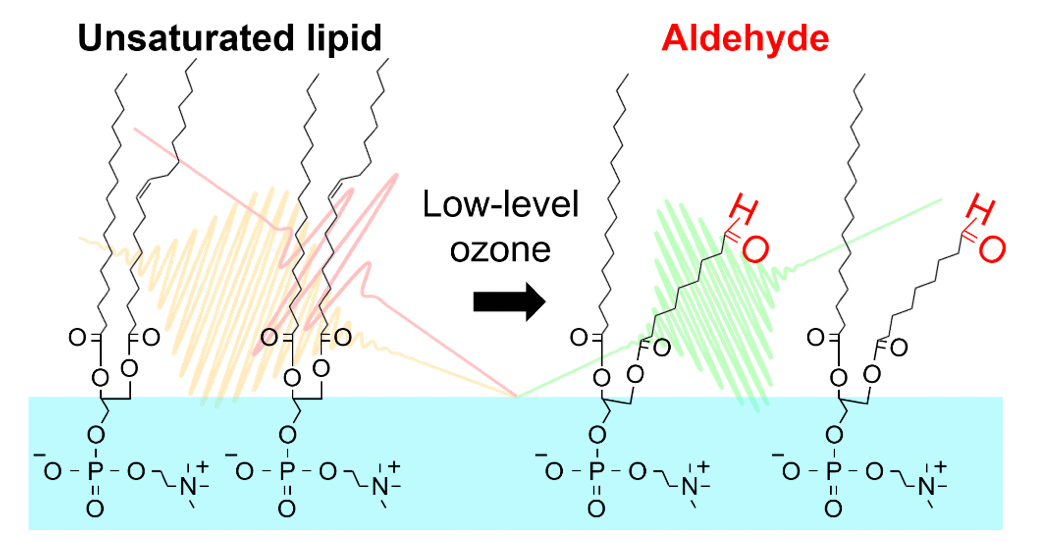The pulmonary surfactant monolayer covers alveoli in the lung and plays an indispensable role in the respiratory system. Recently, it was reported that unsaturated lipids of the pulmonary surfactants are oxidized even by low-level ozone in ambient air. However, the molecular-level understanding of the reaction mechanism is still limited due to technical difficulties. Heterodyne-detected sum frequency generation (HD-SFG) spectroscopy was applied to probe the reaction process of unsaturated phospholipid monolayers under the low-level ozone. The HD-SFG spectroscopy realized the accurate peak assignments of the spectra and the identification of molecular species with high sensitivity. The time-resolved spectra indicated that the C=C moiety in the unsaturated alkyl chain is selectively oxidized to the aldehyde form by ozone. Furthermore, it was revealed that the oxidative degradation kinetics of the C=C moiety is almost identical regardless of the head groups. These results deepen our molecular-level understanding of the oxidation mechanism of unsaturated lipids that are widely found in many biological systems.

